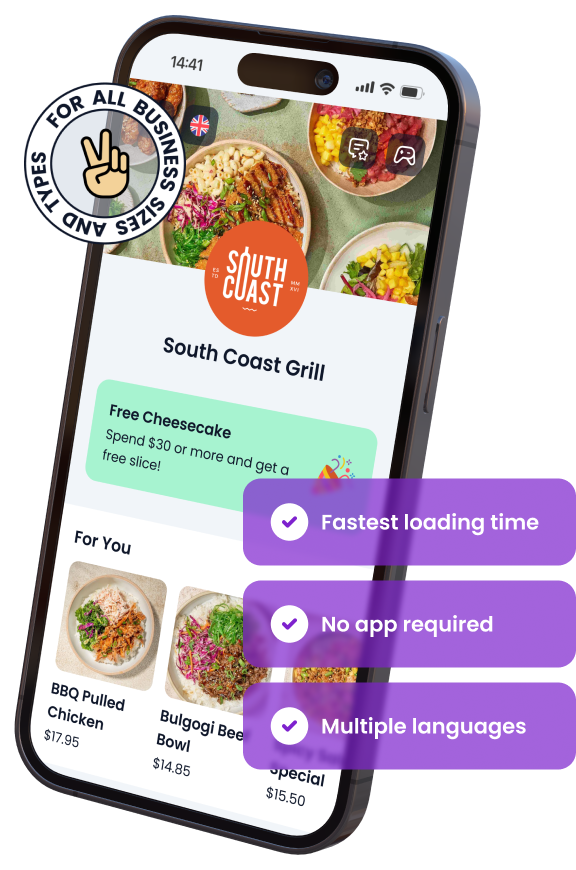

How to Start a Restaurant in Michigan? (Permits & Licenses) Full Guide
Opening a restaurant in Michigan can be both a rewarding and challenging endeavor. With its diverse population, vibrant culinary scene, and bustling tourism in cities like Detroit, Ann Arbor, and Grand Rapids, Michigan offers an excellent platform for aspiring restaurateurs. However, navigating the process of launching a restaurant in the state requires careful planning, a solid understanding of local regulations, and a keen eye for market trends.
Whether you envision a trendy café in downtown Detroit, a family-friendly diner near Lake Michigan, or a fine-dining establishment in a suburban area, success begins with preparation. From crafting a business plan to obtaining the necessary permits and licenses, every step is crucial to turning your dream into reality.
This guide will walk you through the entire process, providing actionable insights, detailed instructions, and practical tips tailored to Michigan’s restaurant industry. Whether you’re starting from scratch or transitioning into the restaurant business, this comprehensive guide ensures you’re fully equipped to launch your venture confidently and compliantly.
Understanding the Restaurant Industry in Michigan
Michigan’s restaurant industry is as diverse as its population. From metropolitan hotspots to charming small towns, the state offers a wealth of opportunities for aspiring restaurant owners. Understanding the current market trends, challenges, and opportunities is essential for making informed decisions and setting your restaurant up for success.
Michigan’s Dining Trends and Customer Preferences
Michigan diners are known for their love of unique and high-quality dining experiences. To attract customers, understanding their preferences and dining habits is key.
- Local Ingredients: Michigan’s agricultural richness means diners often prefer farm-to-table concepts that highlight local produce and fresh flavors.
- Casual Dining Growth: Casual and quick-service restaurants have seen significant growth as customers seek convenient, affordable options.
- Cultural Diversity: Diners appreciate cuisines that reflect Michigan’s cultural diversity, from Middle Eastern to Mexican and Asian-inspired dishes.
- Health-Conscious Choices: Many customers are increasingly opting for healthier menu options, including vegan, vegetarian, and gluten-free dishes.
Pro Tip: Research your target market to align your menu with these dining preferences and trends.
Key Challenges for Restaurant Owners in Michigan
Starting and running a restaurant in Michigan comes with its challenges. By identifying these early, you can prepare effective strategies to mitigate risks.
- Seasonality: Michigan’s winters can lead to fluctuations in customer traffic, especially for restaurants relying on outdoor dining or tourism.
- Rising Costs: From food supplies to labor, managing operational costs is a key concern for many restaurant owners.
- Labor Shortages: The hospitality industry in Michigan often faces challenges in recruiting and retaining skilled staff.
- Competition: With a thriving restaurant scene, standing out among established competitors is crucial for success.
Pro Tip: Focus on building strong customer relationships and offering standout services to overcome competitive pressures.
Opportunities in Michigan’s Restaurant Market
Despite the challenges, Michigan offers unique opportunities that make it a great state to open a restaurant. Identifying these opportunities can help you carve out a niche in the market.
- Tourism-Driven Business: Popular tourist destinations such as Mackinac Island and Traverse City offer high potential for seasonal restaurants.
- Community-Centric Dining: Many Michiganders value restaurants that are community-oriented, offering a great chance for local engagement.
- Emerging Food Trends: Concepts such as food trucks, pop-up dining events, and ghost kitchens are gaining traction in Michigan’s urban areas.
- Collaboration with Local Businesses: Partnering with Michigan’s local breweries, distilleries, and farms can attract more customers and enhance your restaurant’s reputation.
Pro Tip: Leverage Michigan’s tourism and focus on local partnerships to create a restaurant concept that resonates with the community.
Creating Your Restaurant Business Plan
A well-thought-out business plan is the cornerstone of any successful restaurant. It serves as a roadmap, guiding you through every stage of development and ensuring you have a clear vision for your business. In Michigan, a strong business plan can also be essential for securing financing and navigating the regulatory landscape.
Why a Business Plan is Essential
Having a detailed business plan isn’t just about putting your ideas on paper—it’s about turning those ideas into actionable strategies.
- Clarity and Direction: It helps define your restaurant concept, target audience, and operational plan.
- Securing Funding: Banks, investors, and other funding sources will want to see a detailed plan before they provide financial backing.
- Anticipating Challenges: A well-crafted plan allows you to identify potential obstacles and develop strategies to address them.
- Performance Monitoring: It acts as a benchmark for measuring your restaurant’s growth and success.
Pro Tip: Tailor your business plan to Michigan’s specific market, focusing on trends, demographics, and local preferences.
Key Components of a Restaurant Business Plan
Your business plan should cover all essential aspects of launching and running a restaurant. Here’s what to include:
- Mission Statement and Concept
- Define the purpose of your restaurant and the unique experience you aim to provide.
- Include details about the cuisine, theme, and overall vibe.
- Example: “A farm-to-table bistro in Grand Rapids serving locally sourced, seasonal dishes in a relaxed and welcoming environment.”
- Market Analysis for Michigan
- Study the local demographics, including age groups, income levels, and dining preferences.
- Analyze competitors in your chosen location to identify gaps in the market.
- Pro Tip: Use resources like Michigan’s Small Business Development Center for market research data.
- Financial Projections and Budgets
- Include startup costs (equipment, permits, renovations), operating expenses, and expected revenue.
- Create a break-even analysis to understand when your restaurant will start making a profit.
- Pro Tip: Factor in Michigan-specific costs, such as heating expenses during winter months.
- Marketing and Sales Strategies
- Outline how you’ll promote your restaurant pre- and post-launch.
- Include details on your branding, social media presence, and customer loyalty programs.
- Pro Tip: Highlight Michigan-focused strategies, like collaborating with local food influencers or participating in state food festivals.
Tools and Templates to Create a Winning Plan
Creating a professional business plan doesn’t have to be overwhelming. There are numerous resources available to simplify the process:
- Business Plan Software: Tools like LivePlan or Bizplan can help you structure and format your plan.
- Templates: Use pre-made restaurant business plan templates available online to save time.
- Local Resources: The Michigan Economic Development Corporation (MEDC) and Small Business Administration (SBA) offer free templates and advice.
- Professional Help: Hire a business consultant or accountant with experience in Michigan’s restaurant industry for expert guidance.
Pro Tip: Review your business plan regularly and update it as your restaurant grows or market conditions change.
Selecting the Perfect Location in Michigan
The location of your restaurant plays a significant role in its success. Choosing the right spot in Michigan requires a blend of market research, demographic analysis, and strategic planning. A well-chosen location can attract your target customers and ensure consistent foot traffic year-round.
Factors to Consider When Choosing a Location
When evaluating potential locations for your restaurant, focus on these critical factors:
- Proximity to Target Demographics:
- Ensure your location aligns with the dining preferences and income levels of your target audience.
- Example: A fine-dining restaurant may thrive in affluent suburbs like Bloomfield Hills, while a casual eatery might do better near college campuses like those in Ann Arbor.
- Accessibility and Parking:
- Choose a location that is easy to access by car, public transportation, or foot.
- Ensure ample parking spaces, as lack of parking can deter potential customers.
- Local Competition Analysis:
- Assess nearby restaurants to identify gaps in the market or oversaturation of specific cuisines.
- Look for areas where your restaurant concept offers something unique.
Pro Tip: Visit potential locations during different times of the day to evaluate foot traffic and customer activity.
Popular Cities and Neighborhoods for Restaurants in Michigan
Michigan offers several hotspots for restaurant success. Here are some cities and neighborhoods to consider:
- Detroit:
- Opportunities: Thriving urban center with a growing food scene and diverse audience.
- Best Areas: Downtown Detroit, Midtown, and Corktown.
- Ann Arbor:
- Opportunities: Home to the University of Michigan, ideal for restaurants targeting students and families.
- Best Areas: Main Street, South University Avenue, and Kerrytown.
- Grand Rapids:
- Opportunities: Known for its craft beer scene, the city attracts foodies and beer enthusiasts.
- Best Areas: Downtown Grand Rapids and Wealthy Street.
- Traverse City:
- Opportunities: Popular tourist destination with high foot traffic during summer.
- Best Areas: Front Street and waterfront locations.
Pro Tip: Research the economic development plans for your chosen city to ensure future growth and sustainability.
Leasing or Buying Commercial Space: What to Know
Deciding whether to lease or buy a property depends on your budget, long-term plans, and the location’s market conditions.
- Leasing Considerations:
- Lower upfront costs make leasing attractive for new restaurateurs.
- Flexibility to relocate if the area doesn’t meet expectations.
- Ensure the lease agreement allows for renovations or signage customization.
- Buying Considerations:
- Higher upfront costs but a long-term investment that builds equity.
- Freedom to customize the property entirely to your needs.
- Consider property taxes and maintenance costs in Michigan.
- Key Tips:
- Hire a real estate agent with experience in Michigan’s commercial market.
- Negotiate favorable terms, such as rent-free periods during construction or renovations.
- Review zoning laws and property regulations to ensure your restaurant concept is permitted in the area.
Pro Tip: Use tools like LoopNet or CoStar to research available properties in Michigan and compare prices.
Michigan Restaurant Permits and Licenses
Acquiring the necessary permits and licenses is a critical step when starting a restaurant in Michigan. The process ensures your restaurant complies with state and local regulations, allowing you to operate legally and avoid fines or closures. While the requirements may vary depending on your location and concept, there are several permits and licenses that every restaurant in Michigan needs.
Comprehensive List of Required Permits and Licenses
To operate a restaurant in Michigan, you will need to obtain the following permits and licenses:
- Food Service License:
- Issued by the Michigan Department of Agriculture and Rural Development (MDARD).
- Certifies that your restaurant meets food safety and sanitation standards.
- Sales Tax License:
- Required for collecting and remitting sales tax on food and beverages.
- Apply through the Michigan Department of Treasury.
- Liquor License (if applicable):
- If you plan to serve alcohol, you’ll need a liquor license from the Michigan Liquor Control Commission (MLCC).
- Types include on-premise licenses for bars and restaurants and special licenses for events.
- Building and Zoning Permits:
- Ensure your chosen location complies with local zoning laws for operating a restaurant.
- Construction or renovation may also require building permits.
- Health Department Approval:
- Local health departments inspect and approve your facility to ensure compliance with food safety laws.
- Fire Department Clearance:
- Obtain approval from the local fire department to confirm that your restaurant meets fire safety standards.
Pro Tip: Create a checklist of these permits to track your progress and ensure timely completion.
Step-by-Step Process for Acquiring Licenses
Follow these steps to obtain the necessary permits and licenses:
- Register Your Business:
- Choose a business name and legal structure (LLC, corporation, etc.).
- Register your business with the Michigan Department of Licensing and Regulatory Affairs (LARA).
- Apply for a Sales Tax License:
- Submit the application online via the Michigan Treasury Online (MTO) portal.
- Ensure you register for an EIN (Employer Identification Number) through the IRS beforehand.
- Secure a Food Service License:
- Submit an application to MDARD along with the required fee.
- Schedule a pre-opening inspection by your local health department.
- Obtain a Liquor License (if applicable):
- Apply through the MLCC and provide all necessary documentation, including proof of property ownership or lease.
- Attend a public hearing as part of the approval process.
- Ensure Zoning Compliance:
- Visit your local zoning office to confirm your location meets zoning requirements.
- Apply for building permits if renovations are needed.
- Schedule Inspections:
- Coordinate with your local health and fire departments for inspections.
- Address any issues highlighted during the inspection process to receive approvals.
Pro Tip: Start the licensing process early, as some permits, such as liquor licenses, can take several months to secure.
Typical Costs and Timelines for Michigan Permits
Understanding the costs and timelines associated with obtaining permits is essential for budgeting and planning.
- Food Service License:
- Cost: $300–$1,000, depending on the size and type of your restaurant.
- Timeline: 2–4 weeks after inspection.
- Liquor License:
- Cost: $600–$20,000, depending on the type of license and location.
- Timeline: 3–6 months or longer, depending on the application process.
- Sales Tax License:
- Cost: Free to apply.
- Timeline: Immediate approval upon registration.
- Building Permits:
- Cost: Varies based on construction scope and city regulations (typically $1,000–$5,000).
- Timeline: 1–4 weeks.
- Health and Fire Inspections:
- Cost: Often included in the food service license or a nominal fee charged separately.
- Timeline: 1–2 weeks, depending on local department schedules.
Pro Tip: Consult with a legal or business advisor to ensure you’re aware of all permit costs and timelines for your specific location.
Health and Safety Regulations for Restaurants
Health and safety compliance is a non-negotiable aspect of running a restaurant in Michigan. By adhering to state and local regulations, you ensure a safe environment for customers and staff, avoid legal issues, and maintain your restaurant’s reputation. Understanding these regulations and staying up to date with inspections is essential for long-term success.
Michigan’s Health Code Requirements for Restaurants
To operate a restaurant in Michigan, you must meet the state’s health code requirements, which are enforced by local health departments. Key requirements include:
- Food Storage and Handling:
- Store food at proper temperatures to avoid contamination.
- Separate raw and cooked foods to prevent cross-contamination.
- Use approved food-grade containers and equipment.
- Sanitation Standards:
- Maintain clean and sanitized work surfaces, utensils, and appliances.
- Provide adequate handwashing facilities with soap and hot water.
- Regularly clean dining areas, restrooms, and storage spaces.
- Water Supply and Waste Disposal:
- Ensure access to potable water for food preparation and cleaning.
- Dispose of waste, grease, and recyclables per local guidelines.
Pro Tip: Review Michigan’s Food Code, which provides detailed health and sanitation regulations for restaurants.
Food Safety Standards and Inspections
Food safety is a critical priority for restaurant owners. In Michigan, health inspections ensure compliance with safety standards and are conducted periodically by local health departments.
- Types of Inspections:
- Pre-opening inspections to verify compliance before your restaurant opens.
- Routine inspections to ensure ongoing adherence to food safety laws.
- Follow-up inspections to address and resolve any violations.
- Common Inspection Focus Areas:
- Food storage and preparation practices.
- Cleanliness of kitchen and dining areas.
- Condition of equipment and pest control measures.
- How to Prepare for Inspections:
- Train staff on food safety best practices.
- Conduct internal audits to identify and fix potential violations.
- Keep detailed records of cleaning schedules, temperature logs, and staff certifications.
Pro Tip: Post your food safety inspection score visibly, as it reassures customers and builds trust.
Employee Health and Safety Compliance
Ensuring the health and safety of your staff is as important as maintaining food safety. Michigan requires restaurants to comply with labor and workplace safety regulations set by OSHA and other agencies.
- Workplace Safety Measures:
- Provide non-slip mats and proper footwear to prevent injuries.
- Train staff to use kitchen equipment safely, such as knives, slicers, and fryers.
- Install fire extinguishers and ensure staff is trained to handle emergencies.
- Employee Health Requirements:
- Enforce sick leave policies to prevent employees with contagious illnesses from working.
- Require staff to undergo food safety training and certification, such as ServSafe.
- Provide personal protective equipment (PPE) when needed, such as gloves and masks.
Pro Tip: Create a workplace safety manual for employees and conduct regular training sessions to keep them informed of updated safety practices.
Structuring Your Restaurant Business
Choosing the right structure for your restaurant business is a foundational step that impacts everything from taxation to legal liability. Understanding the options available in Michigan and the steps to register your business can help you make informed decisions and set your restaurant up for long-term success.
Choosing the Right Legal Structure
The legal structure of your business determines your level of personal liability, tax obligations, and administrative requirements. Common options for restaurant owners in Michigan include:
- Sole Proprietorship:
- Simplest structure, ideal for small, single-owner businesses.
- No legal separation between you and the business.
- Personal liability for business debts and obligations.
- Limited Liability Company (LLC):
- Popular choice for restaurant owners due to its flexibility and protection.
- Offers personal liability protection while allowing profits to pass through to the owner’s personal tax return.
- Simple to establish and maintain in Michigan.
- Corporation:
- Provides the strongest liability protection but involves more regulations and paperwork.
- C-Corporations are taxed separately, while S-Corporations offer pass-through taxation.
- Best suited for larger restaurants with multiple investors.
Pro Tip: Consult a business attorney or accountant to determine which structure aligns with your financial goals and operational needs.
Registering Your Business in Michigan
Once you’ve chosen your legal structure, the next step is registering your restaurant with the state. Follow these steps to ensure compliance:
- Register Your Business Name:
- Conduct a name availability search on the Michigan Department of Licensing and Regulatory Affairs (LARA) website.
- File for a “Doing Business As” (DBA) name if operating under a different name than your legal entity.
- Obtain an EIN (Employer Identification Number):
- Apply for an EIN through the IRS website for free.
- Required for hiring employees, opening a business bank account, and filing taxes.
- File Formation Documents:
- LLC: Submit Articles of Organization to LARA with a filing fee of $50.
- Corporation: File Articles of Incorporation with LARA; fees vary depending on the type of corporation.
- Register for Michigan Taxes:
- Sign up for a Michigan Treasury Online (MTO) account to handle state taxes.
- Register for a Sales Tax License to collect and remit sales tax on food and beverages.
- Secure Local Business Licenses:
- Check with your city or county for additional licensing requirements, such as general business licenses.
Pro Tip: Keep digital and physical copies of all registration documents for easy reference.
How to Obtain an EIN (Employer Identification Number)
An EIN is a federal tax ID number used to identify your business. It is required for most restaurants in Michigan, especially those hiring employees.
- Steps to Apply for an EIN:
- Visit the official IRS website and navigate to the EIN application page.
- Complete the online application by providing details about your business, such as name, address, and structure.
- Submit the application and receive your EIN immediately upon approval.
- Why You Need an EIN:
- Hiring employees and managing payroll.
- Filing federal and state taxes.
- Opening a business bank account.
Pro Tip: Save your EIN confirmation letter, as banks and tax agencies may require it during the setup process.
State and Local Tax Registrations
Operating a restaurant in Michigan involves registering for and paying several taxes. Familiarize yourself with the following:
- Sales Tax:
- Michigan’s sales tax rate is 6%.
- Applies to all food and beverage sales except non-prepared grocery items.
- Employer Taxes:
- Register for unemployment insurance taxes through the Michigan Unemployment Insurance Agency (UIA).
- Withhold state income taxes for employees and remit them to the Michigan Department of Treasury.
- Property Tax:
- If you own the property for your restaurant, you’ll be responsible for annual property taxes.
Pro Tip: Use accounting software or hire a tax professional to ensure timely tax filings and compliance with Michigan’s tax laws.
Designing Your Restaurant Concept
Your restaurant concept sets the tone for your business and defines the experience you offer to customers. From the menu to the ambiance, every detail should reflect your vision and resonate with your target audience. In Michigan, incorporating local elements into your concept can make your restaurant stand out in a competitive market.
Defining Your Menu and Cuisine
Your menu is the heart of your restaurant and should align with your concept while appealing to local tastes.
- Understand Your Audience:
- Research your target demographic to determine preferred cuisines and dietary trends.
- Example: In urban areas like Detroit, customers may lean toward international or fusion cuisines, while suburban diners might prefer classic comfort food.
- Keep It Simple and Focused:
- Avoid an overly complicated menu that can overwhelm customers and staff.
- Focus on a few signature dishes that showcase your concept and culinary expertise.
- Incorporate Local Ingredients:
- Highlight Michigan’s abundance of fresh produce, dairy, and meat in your dishes.
- Example: Create seasonal menus featuring cherries from Traverse City or whitefish from the Great Lakes.
Pro Tip: Design your menu with a balance of high-margin items (e.g., beverages) and crowd-pleasers to maximize profitability.
Interior Design and Ambiance for Michigan Diners
The interior design and ambiance of your restaurant create the first impression for customers and significantly influence their dining experience.
- Match Your Concept:
- Casual eateries should have a warm, inviting atmosphere, while fine dining establishments should exude elegance.
- Example: A farm-to-table restaurant could use rustic furniture, earthy tones, and plenty of natural light.
- Prioritize Comfort and Functionality:
- Ensure seating arrangements are comfortable and allow for easy movement.
- Provide adequate lighting, temperature control, and acoustics for an enjoyable dining experience.
- Incorporate Local Elements:
- Use decor that celebrates Michigan’s culture and heritage.
- Example: Display artwork from local artists or incorporate Michigan-themed motifs, like nautical decor for a lakeside restaurant.
Pro Tip: Invest in flexible seating arrangements to accommodate different group sizes and events.
Creating a Brand Identity That Stands Out
Your brand identity sets your restaurant apart from competitors and establishes a lasting connection with customers.
- Define Your Story:
- Share the inspiration behind your restaurant, whether it’s a passion for a specific cuisine, a family tradition, or a desire to support local farmers.
- Logo and Visual Design:
- Design a memorable logo and choose a color palette that reflects your restaurant’s concept.
- Example: A modern bistro might use sleek, minimalist designs, while a family diner could go for vibrant, cheerful colors.
- Develop a Consistent Voice:
- Use a consistent tone and language across your branding materials, from menus to social media posts.
- Example: A high-end restaurant might opt for formal language, while a casual café could use a friendly, conversational tone.
- Marketing and Online Presence:
- Create a professional website and optimize it for SEO to attract local diners.
- Engage with customers on social media platforms like Instagram, showcasing your dishes, promotions, and events.
Pro Tip: Build a memorable tagline that captures the essence of your restaurant, such as “Savor Michigan, One Bite at a Time.”
Hiring and Training Your Team
Your staff is the backbone of your restaurant, directly impacting customer satisfaction and overall operations. In Michigan, where competition for skilled labor can be fierce, building a reliable and well-trained team is essential to ensure your restaurant runs smoothly and delivers exceptional service.
How to Hire the Right Staff in Michigan
Finding the right talent is the first step to building a successful restaurant team. Focus on hiring employees who align with your values and are committed to providing an excellent dining experience.
- Key Roles to Fill:
- Front-of-House (FOH): Servers, hosts, bartenders, and cashiers.
- Back-of-House (BOH): Chefs, line cooks, dishwashers, and prep staff.
- Management: General manager, kitchen manager, and shift supervisors.
- Where to Find Candidates:
- Job Portals: Post openings on platforms like Indeed, LinkedIn, and MichiganWorks! for wide reach.
- Local Schools and Training Programs: Partner with Michigan-based culinary schools like the Secchia Institute for Culinary Education or Baker College.
- Social Media: Use platforms like Facebook and Instagram to advertise job openings and attract local talent.
- Employee Referrals: Encourage existing employees to refer qualified candidates, offering incentives when applicable.
- Interview and Selection Tips:
- Conduct behavioral interviews to assess soft skills like communication, teamwork, and adaptability.
- Test practical skills for kitchen roles, such as preparing specific dishes or handling equipment.
- Verify references to ensure candidates have relevant experience and a positive work history.
Pro Tip: Create a structured onboarding process to set clear expectations and help new hires integrate quickly.
Training Programs to Ensure Excellence
Training your team effectively ensures consistency in operations and service quality, building a strong foundation for your restaurant’s success.
- Customer Service Training:
- Teach FOH staff how to handle orders, resolve complaints, and provide exceptional service.
- Focus on creating a positive dining experience, emphasizing hospitality and attentiveness.
- Food Safety and Sanitation:
- Train all staff on food handling procedures, sanitation practices, and health code compliance.
- Encourage certifications like ServSafe, which is widely recognized and required by many Michigan health departments.
- Menu and Product Knowledge:
- Ensure staff are familiar with menu items, ingredients, and preparation techniques.
- Train servers to make recommendations, upsell items, and accommodate dietary restrictions.
- Technology Training:
- Train staff on the use of your POS (Point of Sale) system, online ordering platforms, and reservation software.
- Familiarize them with tech tools like scheduling apps and inventory management software.
- Ongoing Training and Skill Development:
- Host regular workshops, tastings, or team-building exercises to keep employees engaged and motivated.
- Offer leadership development programs for employees showing potential for promotion.
Pro Tip: Provide an employee handbook detailing procedures, expectations, and policies to ensure clarity and consistency.
Understanding Michigan’s Labor Laws and Wages
Complying with Michigan’s labor laws is essential to avoid penalties and maintain a positive work environment.
- Minimum Wage and Overtime:
- Michigan’s minimum wage is subject to periodic updates, so stay informed on current rates.
- Tipped employees must earn at least the state’s tipped minimum wage, with tips making up the difference to reach the full minimum wage.
- Pay overtime (1.5x regular hourly rate) for hours worked over 40 in a week.
- Employee Rights:
- Follow federal and state laws regarding meal breaks, sick leave, and workplace safety.
- Ensure equal employment opportunities by adhering to anti-discrimination laws.
- Youth Employment:
- If hiring minors, comply with Michigan’s child labor laws, including work hour restrictions and obtaining a work permit.
- Payroll and Tax Compliance:
- Withhold state and federal taxes, including Social Security and Medicare.
- Register for unemployment insurance and workers’ compensation in Michigan.
Pro Tip: Use payroll software or partner with a payroll service to simplify compliance with Michigan labor laws and tax regulations.
Marketing and Promoting Your Restaurant
A strong marketing strategy is essential to attract customers and establish your restaurant in Michigan’s competitive dining scene. Leveraging a mix of traditional and digital marketing techniques can help you create buzz, build brand loyalty, and drive consistent foot traffic.
Pre-Launch Marketing Strategies
The success of your restaurant’s grand opening depends on how well you market it beforehand. Start building excitement and awareness even before your doors open.
- Build a Website:
- Create a professional website with essential details like your menu, location, hours, and reservation options.
- Optimize your website for mobile devices and local SEO to increase visibility.
- Engage on Social Media:
- Share behind-the-scenes content, such as the design process, menu development, and staff introductions.
- Use platforms like Instagram, Facebook, and TikTok to showcase your brand and attract followers.
- Host a Soft Opening:
- Invite friends, family, and local influencers for a private preview.
- Use their feedback to make final adjustments and generate word-of-mouth buzz.
- Collaborate with Local Media:
- Reach out to Michigan-based food bloggers, newspapers, and radio stations for coverage.
- Pitch your restaurant as a new and exciting addition to the local dining scene.
Pro Tip: Use a mix of photos, videos, and stories to make your social media posts engaging and memorable.
Local SEO for Michigan Restaurants
Optimizing your online presence for local searches is crucial for attracting nearby customers. Local SEO helps your restaurant appear in search results when people look for dining options in your area.
- Claim Your Google My Business Profile:
- Ensure your business name, address, phone number, and operating hours are accurate.
- Add high-quality photos of your restaurant and menu items.
- Encourage satisfied customers to leave positive reviews.
- Target Location-Based Keywords:
- Use keywords like “best Italian restaurant in Detroit” or “family-friendly dining in Grand Rapids” in your website content.
- Include your city or neighborhood name on your website and social media profiles.
- Directory Listings:
- Register your restaurant on popular directories like Yelp, TripAdvisor, and Zomato.
- Keep your profiles updated with the latest contact information, menus, and promotions.
Pro Tip: Regularly monitor your online presence and respond to customer reviews to maintain a positive reputation.
Building Partnerships with Local Businesses
Collaborating with other businesses in Michigan can help you expand your reach and build community goodwill.
- Partner with Local Farms and Suppliers:
- Highlight local ingredients on your menu to appeal to Michigan diners who value farm-to-table dining.
- Include the names of local suppliers in your marketing materials.
- Collaborate with Breweries and Wineries:
- Work with Michigan’s craft breweries and wineries to offer exclusive pairings or host tasting events.
- Feature local beers and wines on your menu to draw in enthusiasts.
- Sponsor Community Events:
- Sponsor local festivals, sports teams, or charity events to increase your visibility.
- Offer catering services for local gatherings to introduce your food to a broader audience.
Pro Tip: Use collaborative events as an opportunity to distribute promotional materials, such as flyers or discount coupons.
Running Promotions to Attract Customers
Promotions are a powerful way to draw attention to your restaurant, especially during the initial months of operation.
- Discounts and Special Offers:
- Offer discounts for first-time visitors or limited-time promotions to encourage new customers to try your food.
- Create weekday specials, such as “Taco Tuesday” or “Kids Eat Free on Thursdays.”
- Loyalty Programs:
- Introduce a loyalty program to reward repeat customers with discounts, free meals, or exclusive perks.
- Use digital tools, such as Menuviel, to track customer purchases and manage rewards.
- Seasonal and Holiday Promotions:
- Host themed events or create special menus for holidays like Thanksgiving, Christmas, and Valentine’s Day.
- Run promotions tied to Michigan-specific events, like the Cherry Festival in Traverse City.
Pro Tip: Track the effectiveness of your promotions to identify what works best and refine your strategies.
Managing Finances and Costs
Effectively managing your finances is critical to running a profitable restaurant in Michigan. From estimating startup expenses to maintaining a steady cash flow, financial planning ensures your business remains sustainable. By staying on top of costs, you can minimize waste, maximize profits, and prepare for future growth.
Estimating Startup Costs for a Michigan Restaurant
Understanding the upfront costs of opening a restaurant helps you create a realistic budget and avoid financial surprises. Typical startup expenses include:
- Permits and Licenses:
- Food service license, liquor license, and other permits can cost anywhere from $500 to $20,000.
- Lease or Property Purchase:
- Monthly lease rates in cities like Detroit can range from $15 to $40 per square foot, depending on location.
- Include security deposits and renovation costs in your budget.
- Equipment and Furnishings:
- Commercial kitchen appliances: $50,000–$100,000.
- Furniture, fixtures, and decor: $10,000–$50,000, depending on the concept.
- Inventory and Supplies:
- Initial food and beverage inventory: $5,000–$15,000.
- Smallwares (plates, utensils, glassware): $2,000–$10,000.
- Marketing and Branding:
- Website, signage, and launch promotions: $5,000–$20,000.
- Working Capital:
- Reserve funds to cover three to six months of operating expenses.
Pro Tip: Create a detailed startup budget and include a contingency fund to cover unexpected costs.
Securing Funding for Your Restaurant
Most restaurant owners need external funding to cover startup costs. Explore these options to finance your Michigan restaurant:
- Small Business Loans:
- Apply for loans through banks, credit unions, or the Small Business Administration (SBA).
- Michigan’s SBA offers specific programs tailored to restaurant startups.
- Grants for Michigan Businesses:
- Check with the Michigan Economic Development Corporation (MEDC) for grant opportunities.
- Explore programs like Match on Main or the Michigan Small Business Relief Program.
- Private Investors:
- Pitch your business plan to angel investors or venture capital firms.
- Offer equity in exchange for financial backing.
- Crowdfunding:
- Use platforms like Kickstarter or GoFundMe to raise funds while building community support.
- Personal Savings or Loans:
- Tap into personal savings or seek low-interest loans from friends and family.
Pro Tip: Prepare a strong business plan and financial projections to convince lenders or investors of your restaurant’s potential.
How to Manage Operating Costs Effectively
Once your restaurant is up and running, managing day-to-day expenses is crucial for maintaining profitability.
- Track Key Expenses:
- Food costs: Keep food costs at 28%–35% of your total sales.
- Labor costs: Aim for labor costs to be 20%–30% of sales.
- Rent: Keep rent and occupancy costs below 10% of monthly revenue.
- Control Food Waste:
- Use inventory management systems to track stock levels and reduce waste.
- Train staff on portion control and proper food storage techniques.
- Optimize Labor Efficiency:
- Use scheduling software to align staff hours with customer traffic patterns.
- Cross-train employees to handle multiple roles during slow periods.
- Negotiate with Vendors:
- Build strong relationships with local suppliers to secure better pricing and terms.
- Compare quotes from multiple vendors to ensure competitive rates.
- Monitor Cash Flow:
- Regularly review financial reports to identify trends and areas for improvement.
- Set aside reserves to handle unexpected expenses or seasonal slowdowns.
Pro Tip: Use accounting software tailored to restaurants, such as QuickBooks or Toast, to streamline financial management and track performance metrics.
Embracing Technology for Efficiency
Incorporating technology into your restaurant operations can save time, reduce costs, and improve the customer experience. From streamlining daily tasks to enhancing customer interactions, technology offers tools that help restaurants in Michigan operate more efficiently and stay competitive.
Point of Sale (POS) Systems for Restaurants
A reliable POS system is a must-have for modern restaurants. It serves as the hub for managing orders, payments, and operational data.
- Key Features to Look For:
- Order management: Simplifies order-taking and tracks kitchen tickets.
- Payment processing: Accepts credit cards, mobile payments, and gift cards.
- Inventory tracking: Monitors stock levels and helps reduce food waste.
- Sales analytics: Provides real-time insights into revenue and popular menu items.
- Popular POS Systems for Restaurants:
- Toast, Square, and Clover are widely used for their user-friendly interfaces and robust features.
- Choose a system that integrates with other tools, such as reservation platforms and accounting software.
Pro Tip: Select a cloud-based POS system to access your data from anywhere and ensure automatic updates.
Online Ordering and Delivery Platforms
Online ordering and delivery are essential for restaurants aiming to reach a broader audience and increase revenue.
- Benefits of Online Ordering:
- Increases convenience for customers, driving more sales.
- Reduces errors compared to phone orders by allowing customers to input their preferences directly.
- Boosts ticket sizes as customers are more likely to add extras when ordering online.
- Top Delivery Platforms in Michigan:
- Grubhub, DoorDash, and Uber Eats are popular choices for third-party delivery services.
- Consider using your own delivery service for better control and reduced fees.
- Integrating Online Ordering with Your Website:
- Use tools like Menuviel to create a seamless online ordering experience directly from your website.
- Promote special online-only deals to encourage customers to order through your platform.
Pro Tip: Regularly review delivery platform fees and renegotiate contracts to maximize profitability.
Using Analytics to Monitor Performance
Data analytics can help you identify trends, measure performance, and make informed decisions to improve your restaurant’s efficiency.
- Tracking Key Metrics:
- Sales trends: Identify peak hours, best-selling items, and seasonal patterns.
- Labor efficiency: Compare labor costs to revenue to ensure optimal staffing.
- Customer insights: Monitor repeat customer rates and average spend per visit.
- Tools for Data Analytics:
- POS systems often include built-in analytics dashboards.
- Use tools like Google Analytics to track online interactions and measure the effectiveness of marketing campaigns.
- Actionable Insights:
- Adjust menu offerings based on sales trends to maximize profits.
- Schedule staff more efficiently during high-traffic periods.
- Optimize inventory levels to reduce food waste and control costs.
Pro Tip: Schedule monthly reviews of your data to make proactive adjustments and stay ahead of challenges.
Automating Daily Operations
Automation can streamline repetitive tasks, giving you and your team more time to focus on delivering an exceptional dining experience.
- Automated Tools for Restaurants:
- Employee scheduling software: Tools like 7shifts and When I Work can automate staff schedules based on availability and labor laws.
- Reservation platforms: Systems like OpenTable or Resy manage bookings, send reminders, and optimize table turnover.
- Inventory management: Use platforms like MarketMan or BlueCart to automate inventory tracking and reordering.
- Benefits of Automation:
- Reduces human errors, such as overbooking or missed orders.
- Saves time on administrative tasks, allowing you to focus on growth.
- Improves overall efficiency and customer satisfaction.
Pro Tip: Start with one automation tool, such as a scheduling or reservation system, and gradually expand as you identify more areas for optimization.
Common Pitfalls and How to Avoid Them
Starting a restaurant in Michigan is an exciting venture, but it’s not without challenges. By identifying common pitfalls and implementing strategies to address them, you can set your business up for success and avoid costly mistakes.
Licensing and Inspection Delays
One of the most common setbacks for new restaurant owners is delays in obtaining necessary permits and passing inspections.
- Why This Happens:
- Incomplete applications or missing documents.
- Failure to meet local zoning or health code requirements.
- Scheduling backlogs with government agencies or inspectors.
- How to Avoid It:
- Research all necessary licenses and permits well in advance, including timelines and costs.
- Double-check your application for accuracy and completeness before submission.
- Ensure your restaurant complies with health, safety, and zoning standards before scheduling inspections.
Pro Tip: Work with a business consultant or attorney to navigate Michigan’s licensing process efficiently.
Underestimating Startup Costs
Many new restaurant owners underestimate the total costs of starting their business, leading to financial strain during critical early months.
- Why This Happens:
- Overlooking hidden costs, such as utilities, maintenance, or marketing.
- Failing to account for working capital to cover the first 3–6 months of operations.
- How to Avoid It:
- Create a detailed startup budget that includes all expenses, from permits and equipment to marketing and inventory.
- Build a contingency fund of at least 10%–15% of your total startup costs for unexpected expenses.
- Regularly review your financial plan and adjust it as needed.
Pro Tip: Consult with other Michigan restaurant owners or industry professionals to gain insights into realistic cost expectations.
Ignoring Market Research
Entering the market without a thorough understanding of your target audience, competition, and local dining trends can lead to poor business performance.
- Why This Happens:
- Relying on assumptions instead of hard data.
- Failing to identify gaps in the market or oversaturated niches.
- How to Avoid It:
- Conduct thorough market research to identify your target demographic and their preferences.
- Analyze competitors in your area to differentiate your restaurant with unique offerings.
- Use resources like the Michigan Economic Development Corporation or local Small Business Development Centers for market insights.
Pro Tip: Update your market research periodically to adapt to changes in consumer behavior and industry trends.
Overcomplicating the Menu
A menu that’s too broad or complex can overwhelm customers, slow down kitchen operations, and lead to increased food waste.
- Why This Happens:
- Trying to cater to too many tastes or trends.
- Failing to test the feasibility of menu items in a real kitchen setting.
- How to Avoid It:
- Focus on a concise, well-curated menu that aligns with your concept and target audience.
- Test your menu during the soft opening to gauge customer feedback and streamline operations.
- Regularly evaluate menu performance and remove underperforming items.
Pro Tip: Highlight a few signature dishes that define your brand and ensure consistent quality.
Neglecting Marketing Efforts
Even the best restaurant concept can struggle if people don’t know about it. Many restaurant owners neglect marketing, especially after the initial launch.
- Why This Happens:
- Limited marketing budget or resources.
- Focusing solely on operational tasks, leaving little time for promotion.
- How to Avoid It:
- Allocate a portion of your budget (typically 5%–10% of revenue) to ongoing marketing efforts.
- Use free or low-cost marketing tools, such as social media, email campaigns, and Google My Business.
- Engage with the local community through events, sponsorships, and collaborations.
Pro Tip: Create a marketing calendar to plan campaigns, track progress, and ensure consistent promotion year-round.
Overlooking Staff Training and Retention
A poorly trained or disengaged team can result in operational inefficiencies, high turnover, and poor customer experiences.
- Why This Happens:
- Rushed hiring and insufficient training programs.
- Failing to create a positive work environment.
- How to Avoid It:
- Invest in comprehensive onboarding and ongoing training for all employees.
- Foster a supportive workplace culture by recognizing and rewarding employee contributions.
- Offer competitive wages and growth opportunities to retain top talent.
Pro Tip: Regularly solicit feedback from your staff to identify areas for improvement and boost morale.
Checklist for Opening Your Restaurant in Michigan
Opening a restaurant involves managing numerous tasks simultaneously, from securing permits to training staff. A detailed checklist ensures nothing falls through the cracks and keeps your launch on track. Below is a comprehensive step-by-step guide tailored to opening a restaurant in Michigan.
Pre-Opening Tasks to Complete
- Conduct Market Research:
- Analyze the local dining scene to identify trends and customer preferences.
- Study competitors in your chosen area to refine your concept and offerings.
- Create a Business Plan:
- Include your restaurant concept, market analysis, financial projections, and marketing strategies.
- Use this plan to secure funding and guide your decision-making.
- Secure Funding:
- Explore options like small business loans, grants, crowdfunding, or private investors.
- Set aside working capital to cover at least three to six months of operating expenses.
- Choose a Location:
- Select a site based on foot traffic, accessibility, and proximity to your target audience.
- Verify that the location complies with zoning laws and other regulations.
- Obtain Required Permits and Licenses:
- Apply for a food service license, sales tax license, and liquor license (if applicable).
- Schedule inspections for health, fire, and building safety compliance.
- Develop Your Menu:
- Test and refine recipes to ensure consistency and quality.
- Factor in local preferences and use Michigan-sourced ingredients where possible.
- Set Up Utilities and Services:
- Arrange for electricity, gas, water, waste management, and internet services.
- Partner with reliable food suppliers and equipment maintenance companies.
- Design Your Space:
- Plan your restaurant’s layout to optimize kitchen operations and customer comfort.
- Incorporate decor and branding elements that reflect your concept.
Essential Documents to Have Ready
Before opening day, ensure you have the following documents:
- Business registration and tax ID (EIN).
- Copies of permits and licenses, including food service and liquor licenses.
- Employee documentation, including contracts, tax forms, and proof of food safety certifications.
- Insurance policies for general liability, property, and worker’s compensation.
- Supplier contracts and agreements with service providers.
Pro Tip: Keep both physical and digital copies of these documents organized and easily accessible.
Final Inspections and Soft Openings
- Schedule Final Inspections:
- Ensure your kitchen, dining area, and restrooms meet health and safety standards.
- Conduct a final walkthrough with inspectors to address any last-minute adjustments.
- Run a Soft Opening:
- Host a trial run with friends, family, and local influencers to test operations and gather feedback.
- Use this opportunity to refine service timing, menu presentation, and staff coordination.
- Launch Marketing Efforts:
- Promote your grand opening through social media, email campaigns, and local partnerships.
- Distribute flyers, offer opening discounts, or host a community event to draw attention.
- Prepare for Opening Day:
- Train staff to handle high customer volumes and ensure they’re confident with POS systems and menu knowledge.
- Stock up on inventory, including food, beverages, and cleaning supplies.
- Test equipment and conduct a final deep clean of the entire space.
Pro Tip: Create a backup plan for unexpected challenges on opening day, such as equipment malfunctions or staff shortages.
Post-Opening Maintenance
- Monitor Performance Metrics:
- Track sales, customer feedback, and inventory usage to identify areas for improvement.
- Use analytics tools to evaluate the success of your marketing campaigns.
- Engage with Customers:
- Encourage reviews on Google, Yelp, and TripAdvisor to build your online presence.
- Respond promptly to both positive and negative feedback.
- Evaluate Operations:
- Hold regular team meetings to discuss what’s working and where adjustments are needed.
- Continue training sessions to improve efficiency and maintain quality.
Pro Tip: Treat your first few months as a learning period and be open to making changes based on customer and staff feedback.
Key Takeaways
Starting a restaurant in Michigan requires meticulous planning, a thorough understanding of local regulations, and a clear vision for your concept. Here are the most important points to remember:
- Understand the Market: Research Michigan’s dining trends, target audience, and competition to shape a concept that stands out.
- Develop a Solid Business Plan: A comprehensive business plan helps secure funding, organize your goals, and guide your restaurant’s growth.
- Choose the Right Location: Focus on accessibility, foot traffic, and alignment with your target demographic when selecting a location.
- Comply with Permits and Regulations: Obtain all necessary licenses, including food service, liquor, and health permits, to operate legally.
- Focus on Staff and Training: Hire skilled employees, provide robust training programs, and create a positive work environment to ensure operational success.
- Invest in Marketing: Use pre-launch and ongoing marketing strategies to attract customers and build a loyal customer base.
- Control Finances and Costs: Create a detailed budget, manage operating costs effectively, and track performance metrics to maintain profitability.
- Leverage Technology: Implement tools like POS systems, online ordering platforms, and inventory management software to streamline operations.
- Avoid Common Pitfalls: Be proactive in addressing challenges like licensing delays, overspending, or neglecting market research.
- Stay Flexible: Be prepared to adapt based on customer feedback, market conditions, and industry trends.
Launching a restaurant in Michigan can be a rewarding journey with the right planning and execution. By following this guide, you’ll be well-equipped to navigate the process, overcome challenges, and build a thriving restaurant that resonates with your customers.
Essential FAQs on Starting a Restaurant in Michigan
Welcome to the Frequently Asked Questions section—crafted to help you and your readers find clear, SEO-optimized answers to common queries about launching a restaurant in Michigan. Dive in for quick, reliable insights that align with what prospective restaurateurs are searching for.
What licenses and permits are required to open a restaurant in Michigan?
To open a restaurant in Michigan, you’ll typically need:
A Business License, issued by your city or county, enabling you to legally operate.
A Food Service License (also known as a Food Handler’s Card or Health Permit), essential for preparing and serving food.
A Seller’s Permit to collect and remit sales tax.
If you serve alcohol, a Liquor License, which requires proper zoning, public notice, and approval.
Additional requirements may include a Certificate of Occupancy and health inspections.
How much time should I allow to get all the necessary permits before opening?
Start the permitting process 3 to 9 months before opening your doors. Business, food, health, and liquor licenses can take significant time to process and approve.
Do all restaurant employees in Michigan need food safety certification?
Yes—anyone who prepares or serves food must obtain a Food Handler’s Card within 30 days of being hired, often after passing a test with at least a 70% score. Managers with Food Protection Manager Certification are typically exempt.
Who issues the food service and health permits for restaurants in Michigan?
These permits are issued by your local health department, but oversight often comes from the Michigan Department of Agriculture & Rural Development (MDARD). New establishments usually work with a plan review specialist and must pass a final inspection upon completion.
Are there federal requirements I should be aware of beyond state and local permits?
Absolutely. You may need:
An Employer Identification Number (EIN) from the IRS—for taxation, hiring, and banking purposes.
FDA Food Facility Registration, but only if your restaurant manufactures or packages food items for retail (like bottled sauces).
ABOUT THE AUTHOR
Erkin Coban
Your Customers Deserve The Best
And we got Menuviel for them.
The fastest and easy-to-use online QR menu with 12+ unique features. Choose Menuviel and elevate your service quality to the next level.
Use free for the first 30 days.

In This Article

Free AI Tools for Restaurants
TRY NOW ➜

Create multiple menus for each place/branch
Offer breakfast, dinner, drinks, or seasonal menus—all easily accessible in one simple scan.





